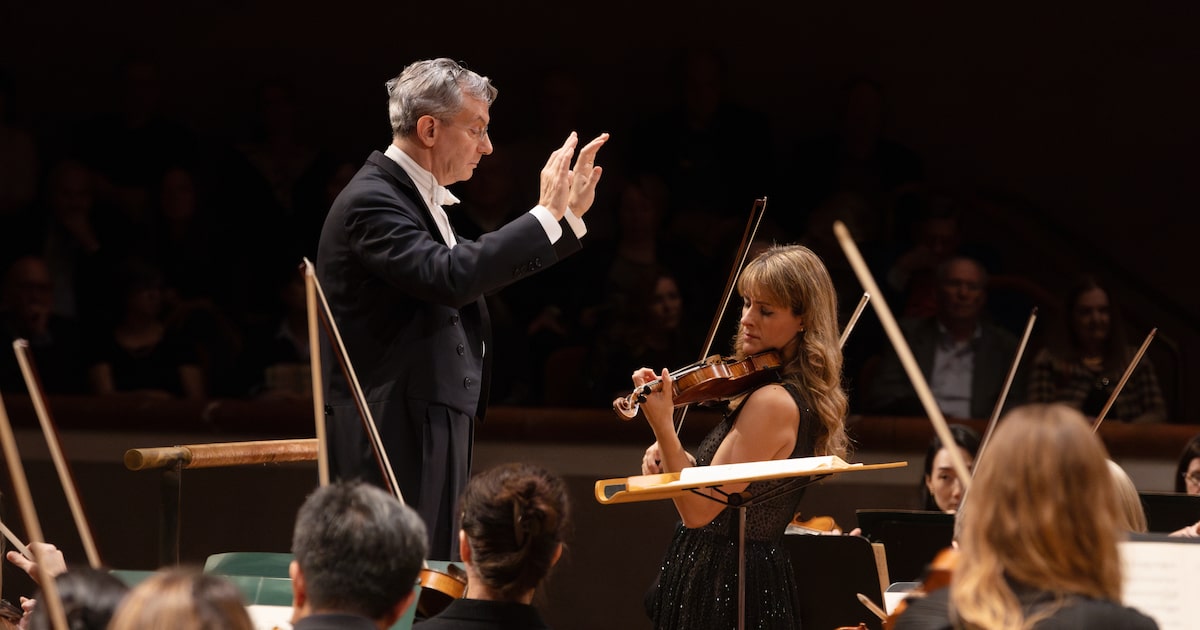
Orchestral repertory gets no more standard than that offered Friday night by the Dallas Symphony Orchestra. But orchestras, like cars, need periodic tuneups, and there’s nothing like the Beethoven Violin Concerto and Mozart Jupiter Symphony to reset timings and tunings, and generally get everything operating smoothly and responsively. (With no overture, the program opened with the concerto.)
With music director Fabio Luisi back on the podium, violin playing in particular evinced a unanimity and polish not always consistent these days. Both performances had personality and much elegant detail. Bassoons repeatedly spun out beautiful tones and phrases, but in both pieces trumpets were occasionally too obtrusive in what aren’t, after all, particularly interesting parts.
In the Beethoven, the Italian-American violinist Francesca Dego proved that pianissimos can be as gripping as fortissimos. Her gleaming tone was immediately striking — she’s said to play a 1697 Francesco Ruggeri violin — and she sometimes explored wide dynamic ranges within individual phrases.
Hers was a highly personalized account, unhurried in the first movement, fairly deliberate in the second, happily buoyant in the finale. Even in the first movement she sometimes stretched time for expressive effect.
Playing with commitment, facility and finesse, with the Joseph Joachim cadenzas, she made a strong case for a generously molded approach. A rock-star ovation was rewarded with a breathtakingly brilliant account of the Paganini Caprice No. 16.
With his extensive operatic experience, Luisi again proved the most alert and responsive of collaborators, and he had the orchestra playing with élan and elegance.
Luisi’s predecessor, Jaap van Zweden, came to the DSO with newer ideas on late 18th and early 19th century performance practices. By contrast, Luisi’s approach to the Mozart Jupiter seemed a bit old-fashioned, with a relatively big orchestra and muscular climaxes.
Of course, Mozart’s performances of his own symphonies never happened in halls remotely as large as Dallas’ 2,000-seat Meyerson Symphony Center. And Luisi was onto something by approaching the Jupiter as more than “just” a symphony.
It’s actually a pretty dramatic piece, and Luisi’s rather operatic approach contrasted bold statements and emphases with whispered delicacies. Phrases great and small were lovingly tapered and directed. The finale was exhilarating.
Less convincing was Luisi’s relaxed three-beats-per-measure tempo in the third movement. Longstanding scholarship suggests that late minuets like this were meant to go at a springing one beat per measure, not three — a scherzo in everything but name.
About a third of Friday’s audience clapped after every one of the concert’s seven movements. When between-movements applause wasn’t acknowledged from the stage, it was awkward for everyone.
Meyerson concerts are prefaced by announcements — amplified to sports arena volumes — asking people not to record or take photos during concerts. This would be an ideal opportunity to add, “For best enjoyment of multi-movement compositions, please hold your applause until all movements have been played.”
Details
Repeats at 7:30 p.m. Saturday and 3 p.m. Sunday at Meyerson Symphony Center, 2301 Flora St. $49 to $263. 214-849-4376, dallassymphony.org.
